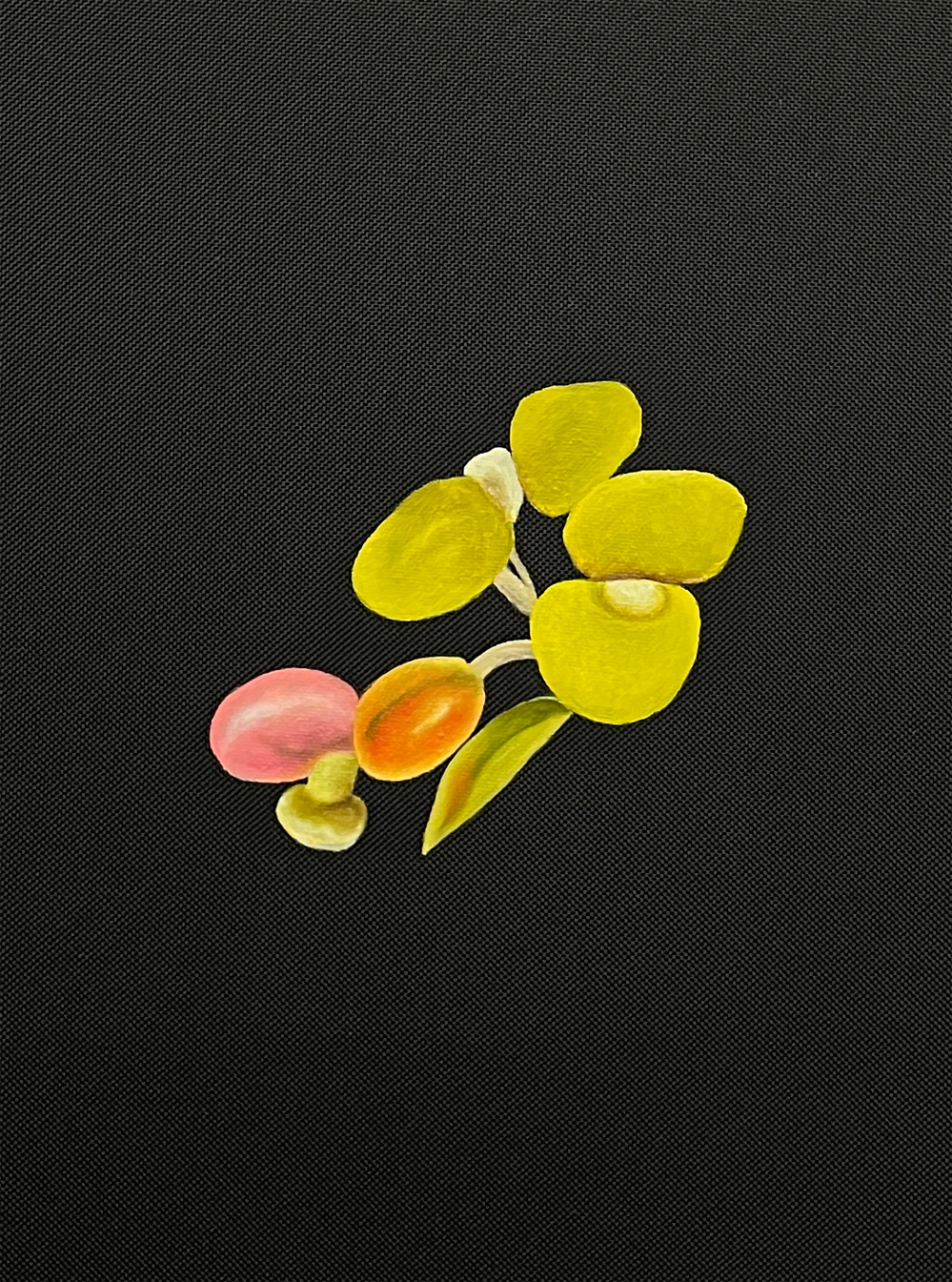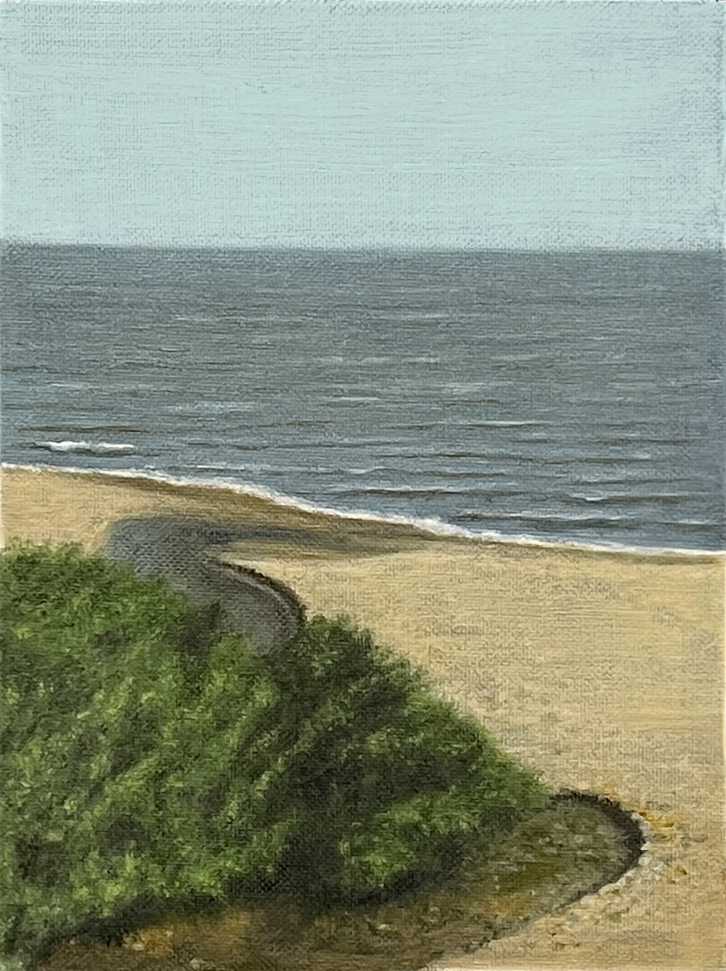
























THE SERIES OF WORKS - FRAGMENTS OF DAILY LIFE
FROM THE CYCLE - HARD TO DESCRIBE
FROM THE CYCLE - HARD TO DESCRIBE
Since the beginning of the full-scale invasion of Russian troops into Ukraine, the lives of many Ukrainians have changed drastically. I spent the first year in Ukraine until late autumn when Russia started attacking the energy system to freeze us in winter. This made work impossible, and I made the difficult decision to leave. Moving is a new stage in life that inevitably requires reflection. Living in a new reality and finding myself in the new context it is exceedingly difficult to continue doing what I did before without changing the perspective. An internal conflict arises, based on the desire to continue painting, which has organically crystallised through years of practice, and on the other hand, the need to create works about the events in my country. As a result, the issue of choice became the main theme and object of representation in my current work.
The cycle of works "Hard to Describe" includes four series: "Irrelevant Archive," "Fragments of Daily Life," "Almost Like Home," and "When You Wanted Unpredictability and Finally Got It." These large-format works are created with oil and acrylic on canvas, narrate contemporary circumstances and the irreversible changes in life caused by war. It includes several thematic series that touch on current issues of displacement, integration, culture, and memory from different perspectives. I largely rely on my own visual travel diary, where fragments of daily reality and current reports and news from Ukraine come together.
The process of relocating people to other countries undoubtedly impacts societal changes in those countries, but it also affects the people who move. As a forcibly displaced person, I try to make sense of the current moment and modern perspectives. Using my phone's camera, I capture the new culture, selecting symbols related to displacement and assimilation, which serve as markers for study and orientation in this context. This flow of images is regularly interspersed with daily news from my country, which I document through screenshots. They concern important topics such as: changing architecture and landscape; the loss of cultural heritage destroyed or stolen by the Russian army; decommunization processes leading to the toppling of monuments and strange attempts to erase history; loss of housing, and so on.
The cycle of works "Hard to Describe" includes four series: "Irrelevant Archive," "Fragments of Daily Life," "Almost Like Home," and "When You Wanted Unpredictability and Finally Got It." These large-format works are created with oil and acrylic on canvas, narrate contemporary circumstances and the irreversible changes in life caused by war. It includes several thematic series that touch on current issues of displacement, integration, culture, and memory from different perspectives. I largely rely on my own visual travel diary, where fragments of daily reality and current reports and news from Ukraine come together.
The process of relocating people to other countries undoubtedly impacts societal changes in those countries, but it also affects the people who move. As a forcibly displaced person, I try to make sense of the current moment and modern perspectives. Using my phone's camera, I capture the new culture, selecting symbols related to displacement and assimilation, which serve as markers for study and orientation in this context. This flow of images is regularly interspersed with daily news from my country, which I document through screenshots. They concern important topics such as: changing architecture and landscape; the loss of cultural heritage destroyed or stolen by the Russian army; decommunization processes leading to the toppling of monuments and strange attempts to erase history; loss of housing, and so on.
This mixed quasi-stream of images I use as a visual algorithm on which the dramaturgy of my works is built.
Isolated, torn-out frames appear on the canvas like flashes in our memory. Each individual element holds the potential for a certain story to develop. Their chaotic arrangement refers to the disintegration after explosions, forming a polyphonic narrative that balances between everyday personal experiences and socially significant changes. These details of a new, unformed reality freeze against an often blank or abstract background of the canvas, reflecting the uncertainty and complexity of envisioning future developments.
Due to my interest in a multifaceted approach to the subject and its representation, the series develops the idea of a broad perspective on the issues of war and displaced people, aiming to provide a comprehensive view of the situation. Through the large number of combined, intertwined, and overlapping elements, this "Kafkaesque" narrative becomes quite complex and sometimes impossible to grasp, which is reflected in the title of the series, Hard to Tell.
Regarding the visual aspect, I want to achieve an effect where such a traditional medium as painting is endowed with the modesty and sense of new energy. What I seek from a painting is an ideologically and visually rich lightness.
Isolated, torn-out frames appear on the canvas like flashes in our memory. Each individual element holds the potential for a certain story to develop. Their chaotic arrangement refers to the disintegration after explosions, forming a polyphonic narrative that balances between everyday personal experiences and socially significant changes. These details of a new, unformed reality freeze against an often blank or abstract background of the canvas, reflecting the uncertainty and complexity of envisioning future developments.
Due to my interest in a multifaceted approach to the subject and its representation, the series develops the idea of a broad perspective on the issues of war and displaced people, aiming to provide a comprehensive view of the situation. Through the large number of combined, intertwined, and overlapping elements, this "Kafkaesque" narrative becomes quite complex and sometimes impossible to grasp, which is reflected in the title of the series, Hard to Tell.
Regarding the visual aspect, I want to achieve an effect where such a traditional medium as painting is endowed with the modesty and sense of new energy. What I seek from a painting is an ideologically and visually rich lightness.